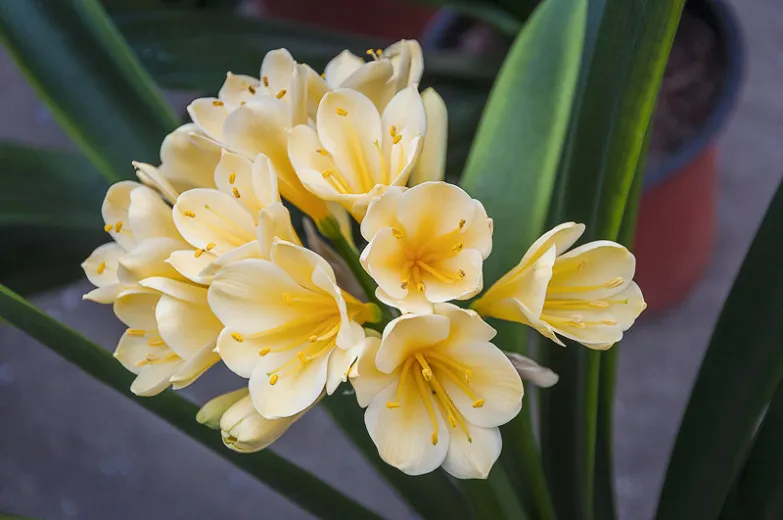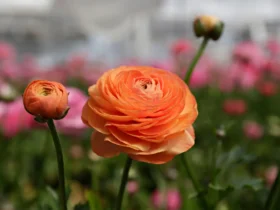Celebrated for its vibrant blooms, Clivia miniata var. citrina (Yellow Clivia) is a radiant evergreen perennial characterized by plump rhizomes. It boasts sizable clusters of 20-40 creamy-yellow, trumpet-shaped flowers during late spring, summer, or fall. With a slight fragrance, these 2.5-inch-long (7 cm) blossoms exhibit broad overlapping tepals and yellow throats. They flourish atop robust, erect stems, emerging from a dense foliage cluster of glossy, light to deep green, arching, strap-shaped leaves. The enduring flowers give way to decorative, bright yellow or red-speckled berries that linger on the plant for months. Even when not in bloom, the luxuriant, virtually unblemished evergreen foliage maintains its sculptural presence. Originating from South Africa and Swaziland, this exquisite tropical specimen is susceptible to damage from freezing temperatures below 30°F to 25°F (-1°C to -4°C) and thrives in frost-free regions. Yellow Clivia proves a valuable and long-lasting addition to beds, borders, or containers, and is commonly cultivated as an indoor plant. It also makes for lovely cut flowers.

Acknowledged with the esteemed Award of Garden Merit by the Royal Horticultural Society, it grows to heights and spreads of 12-24 inches (30-60 cm). Flourishing in well-drained soils with bright filtered light and protection from intense sunlight, it requires ample watering in the summer while allowing dryness in the winter. As the flower stalk reaches 6 inches (15 cm), the watering routine should normalize. A balanced liquid fertilizer is advisable during growth until the formation of flower buds.
Yellow Clivia is nearly impervious to diseases and pests, although vigilance against mealybugs is recommended. Overwatering might lead to root rot, yellowing leaf spots, or inhibited flower stalk formation. Optimal flower production occurs when the plant is somewhat root-bound, but repotting every 3-4 years in late winter or early spring is advised. During repotting, exercise care while untangling the roots as Natal Lily is sensitive to root disturbance.
Propagation can be achieved via seed sowing at 60-70°F (16-21°C) right after ripening, or through division in late winter or early spring. Ingestion of any plant part may cause digestive discomfort. It’s important to note that Yellow Clivia is toxic to dogs and cats.
Native to South Africa and Swaziland, this species boasts an impressive presence in botanical circles.








